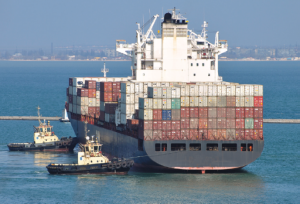The Charity
Aviation
Maritime
Fatigue in the international towage sector

Initial Report
Initial report
“Our work levels continue to be high regardless of the awful impact of COVID and this is further increased by a lack of manning. Some vessels are non-operational due to a variety of reasons causing additional workload on the operational tugs and the crews that man them.”
The reporter stated that the fatigue management plan operated by the company was not working and fatigue issues were very common. The reporter felt that the company’s ISM system appeared to be related to meeting KPI’s and that the fundamental principles of safety management were being ignored.
Further correspondence with the reporter revealed significant information which, according to the reporter, indicates an unacceptable level of work stress caused by the current working rosters and workload.
In line with most tug companies the job consists of:
- Mobilisation (when they start up).
- On site (upon arrival at berth or vessel).
- Start job, (either the first communications with Pilot/Master or when towing gear is applied).
- End Job (when the tug is released by the Pilot/Master),
- Demob (when the vessel is moored, and the engines shut down).

Library image courtesy of Shutterstock
Recording of hours of work and rest – The crew record their hours of work and rest in a paper format, not electronically. These are time-consuming and cannot be monitored centrally, hampering identification of potential non-conformities.
Rostering for jobs – Inaccurate rostering often leads to tugs being deployed unnecessarily, resulting in interrupted sleep.
Tug maintenance – Tug maintenance can often be delayed or deferred due to work commitments and it is rare to operate with a full complement of tugs due to lack of manning and unplanned maintenance because of breakdowns. Any reduction in tug numbers increases workload across the remaining tugs.
In summary, the nature of towage operations is based on demand and means there is often no opportunity for planned rest. This can be further degraded when tugs are taken out of service for planned or unplanned maintenance. Violations of the minimum daily hours of rest (10 hours in any 24) occur on a regular basis.
CHIRP Comment
To mitigate the risk of fatigue tug operators should ensure that the Fatigue Management Plan has an efficient and centralised recording system to record non-conformities and to ensure that compensatory rest is given. This must conform to the STCW 2010 requirements for work and rest hours.
Sufficient tugs should be operated to allow for planned maintenance as well as extra redundancy based on historic breakdown rates. The rostering of tugs and their crews should be reviewed to improve efficiency, and take into account the time needed for victualling and vessel cleaning. A safety representative should be nominated for each group of tugs and safety drills properly structured into the rota.
CHIRP recognises that one of the principal issues faced by the crews is their well-being. Crew representatives who report to management must be listened to and their requests and suggestions supported where appropriate.
Fatigue is a common problem in the shipping industry and is a causal factor in several marine casualties and incidents. However, data on fatigue issues are very widely under-reported. Research by the World Maritime University found that there is a culture of adjustment among seafarers across the maritime industry where hours of work/rest are manipulated for compliance purposes.
Maritime Advisory Board members felt very strongly that the issues raised were very safety-related and wanted to highlight the dangers of fatigue, and stress, on decision making and teamwork which increases the likelihood of an accident if not properly managed.
Human factors relating to this report
Culture – Does everyone really care about safety?
Local Practices – Don’t cut corners. Don’t let local norms become the new standard. Follow procedures – they are there for a reason. Involve the workforce in developing procedures and practices – they will know if something won’t work.
Pressure – Ensure adequate resources – people, time, tools. Foster a culture where crew feel able to report pressure overload.
Report Ends…………………..







